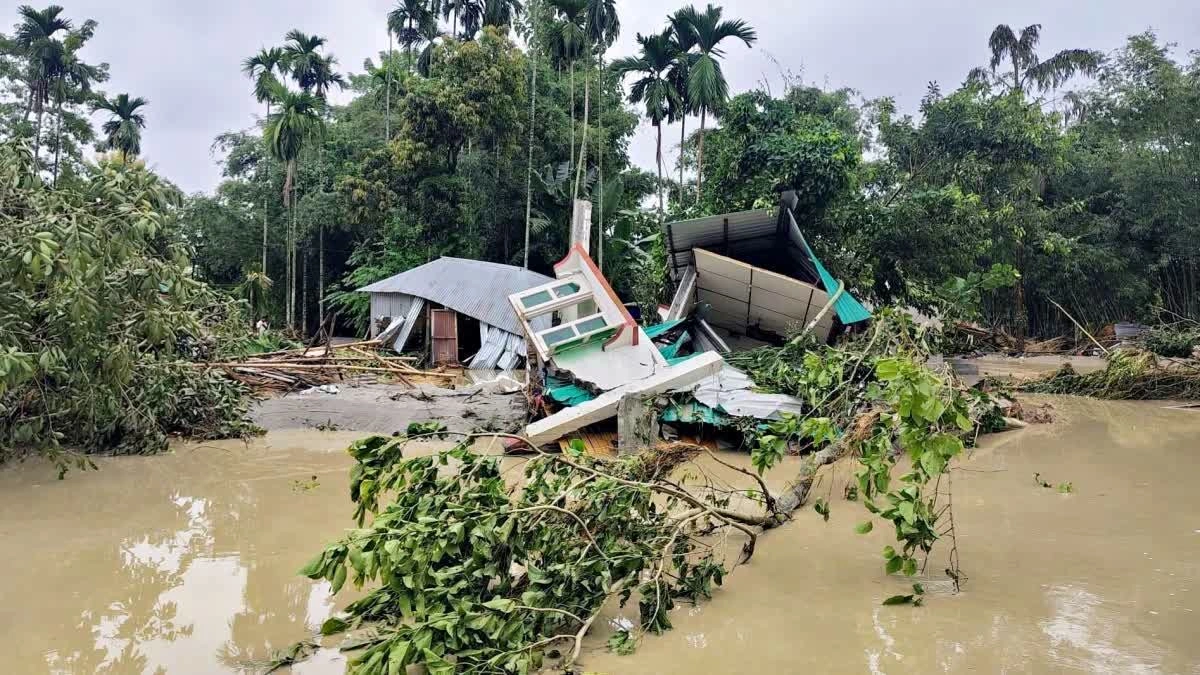Floods cause devastation in North Bengal tea gardens; Tea industry seeks government help
The rains have lashed, rivers have swollen, and the emerald landscapes of North Bengal’s famed tea gardens are now, in many places, submerged. We’re not just talking about a bit of waterlogging; we’re talking about a crisis that’s threatening livelihoods, disrupting the tea economy, and leaving a trail of devastation in its wake. But, here’s the thing, this isn’t just another flood story. It’s a story about the delicate balance between nature, agriculture, and the lives intertwined with the rhythm of the tea harvest. And, it’s a story about resilience – or the lack thereof.
Why This Flood Matters More Than You Think

Okay, so floods happen, right? Especially in regions prone to monsoons. But this isn’t your average monsoon mayhem. The North Bengal floods have hit the tea gardens at a particularly vulnerable time. It’s not just about the immediate damage; it’s about the long-term implications for the tea industry , the workers, and the overall economy of the region. The floods have caused widespread damage to tea bushes, infrastructure, and homes, leaving thousands of tea garden workers displaced and facing an uncertain future. According to reports, entire sections of some gardens are completely washed away, rendering them unusable for cultivation.
What fascinates me is the ripple effect. When tea production takes a hit, it affects not only the local economy but also the global tea market. North Bengal is known for producing some of the finest teas in the world, and a disruption in supply can lead to price hikes and shortages. Let me rephrase that for clarity, your morning cup of tea might actually feel the impact of this.
And, it’s not just the economic impact that’s concerning. The floods also pose a significant threat to the environment and public health. Contamination of water sources, spread of waterborne diseases, and damage to infrastructure are just some of the challenges facing the affected communities. Addressing these challenges requires a coordinated effort from the government, tea industry, and humanitarian organizations.
The Tea Industry’s SOS | A Plea for Government Intervention
The tea industry is now urgently seeking government assistance to cope with the crisis. They’re not just asking for handouts; they’re looking for long-term solutions to mitigate the impact of future floods and build resilience in the face of climate change. The Tea Association of India (TAI) has already submitted a memorandum to the state government, outlining a series of measures to support the flood-affected tea gardens and workers.
These measures include financial assistance for replanting damaged tea bushes, repairing infrastructure, and providing relief to displaced workers. They also want the government to invest in flood control measures, such as building embankments and improving drainage systems. Basically, a call for smarter long-term planning, not just band-aid solutions.
But here’s the crucial point. What fascinates me is that the industry isn’t just blaming the floods. They’re acknowledging that unsustainable practices like deforestation and poorly planned development have exacerbated the problem. So, it is a moment for self reflection as well.
How Climate Change is Making Things Worse (And What We Can Do)
Let’s be honest, we can’t talk about floods without talking about climate change. It’s the elephant in the room, or, in this case, the overflowing river in the tea garden. Climate change is increasing the frequency and intensity of extreme weather events, making regions like North Bengal more vulnerable to floods and landslides . Warmer temperatures are causing glaciers to melt at an alarming rate, leading to higher river levels and increased flood risk.
But, what’s fascinating is that the tea industry itself can play a role in mitigating climate change. By adopting sustainable practices, such as reducing carbon emissions, conserving water, and promoting biodiversity, tea gardens can become part of the solution. What I am saying is that the problem itself needs to be turned into an opportunity.
The one thing you absolutely must understand is that inaction is not an option. We need to reduce our carbon footprint, invest in renewable energy, and protect our forests. And, most importantly, we need to support the communities that are on the front lines of climate change. That includes the tea garden workers of North Bengal.
Rebuilding Lives | The Human Cost of the Floods
Beyond the economic and environmental impacts, the floods in North Bengal have taken a heavy toll on human lives. Thousands of people have been displaced from their homes, losing their livelihoods and possessions. The psychological impact of such a disaster can be devastating, leaving people traumatized and struggling to cope with the loss and uncertainty.
A common mistake I see people make is underestimating the importance of mental health support in disaster relief efforts. It’s not enough to provide food and shelter; we also need to provide counseling, therapy, and other forms of psychological assistance to help people heal and rebuild their lives.
That moment of panic when floodwaters enter your home. We’ve all seen images of that on TV. Let’s walk through this together, step-by-step, so you can understand that these aren’t just statistics; they’re real people facing unimaginable challenges.
The Road Ahead | Resilience and Sustainable Solutions
The devastation in North Bengal is a stark reminder of the challenges facing communities in the face of climate change and unsustainable development. But, it’s also an opportunity to build a more resilient and sustainable future. This requires a multi-pronged approach, involving government, industry, communities, and individuals.
Financial support and replanting efforts will be essential as will new building techniques. Building back betteris not just a slogan; it’s a necessity. Investing in flood control measures, promoting sustainable agricultural practices, and providing social safety nets for vulnerable communities are all crucial steps.
And, here’s where each of us comes in. By supporting sustainable businesses, reducing our carbon footprint, and advocating for climate action, we can all contribute to a more resilient and equitable future for all. Each small act makes a big difference.
FAQ
What areas of North Bengal are most affected by the floods?
The districts of Jalpaiguri, Cooch Behar, and Darjeeling have experienced the most severe flooding, impacting numerous tea gardens and residential areas.
How can I help the flood victims in North Bengal?
You can donate to reputable organizations providing relief and rehabilitation assistance, such as Goonj or local NGOs working in the affected areas.
What is the long-term impact of the floods on the tea industry?
The long-term impact includes reduced tea production, economic losses for tea gardens and workers, and potential disruptions to the global tea supply chain.
What measures are being taken to prevent future floods in the region?
The government and tea industry are exploring measures such as improved drainage systems, construction of embankments, and sustainable land management practices.
What kind of assistance is the tea industry seeking from the government?
The tea industry is seeking financial assistance for replanting damaged tea bushes, repairing infrastructure, providing relief to displaced workers, and investing in flood control measures.
How can climate change exacerbate the flood situation in North Bengal?
Climate change is increasing the frequency and intensity of extreme weather events, leading to heavier rainfall, melting glaciers, and higher river levels, all of which increase flood risk.













